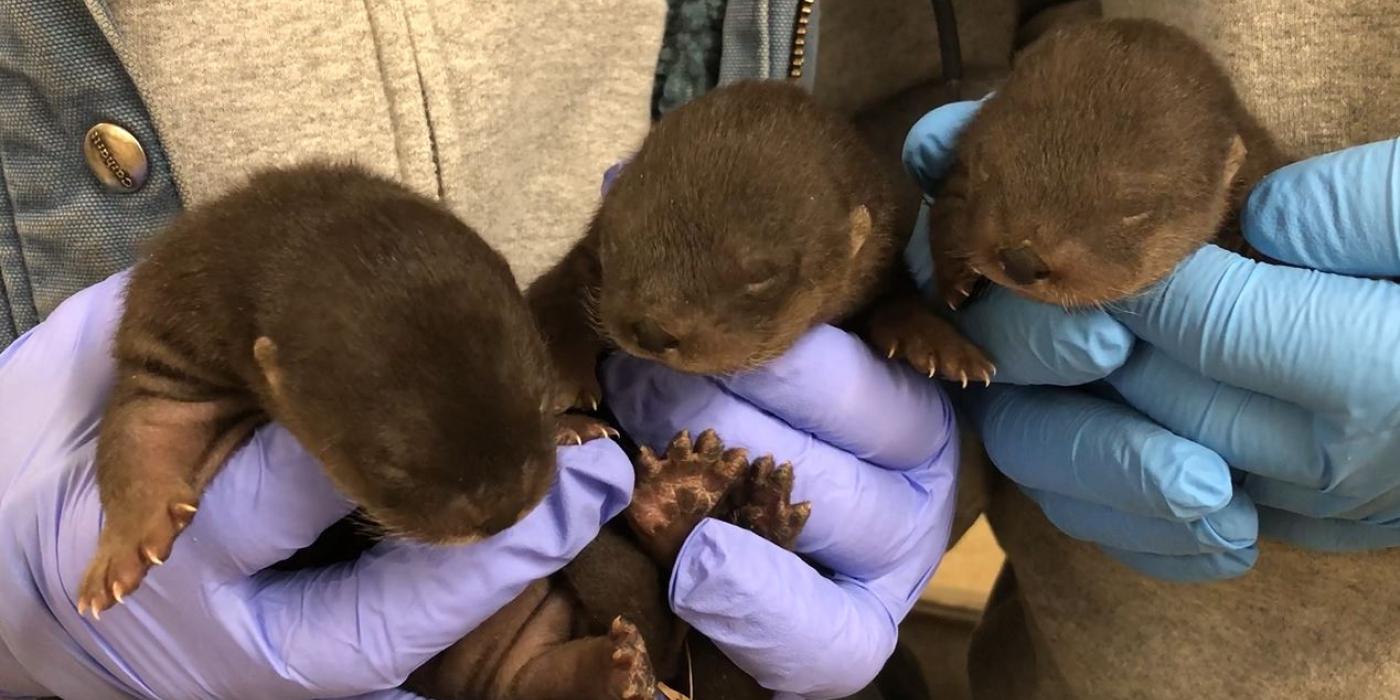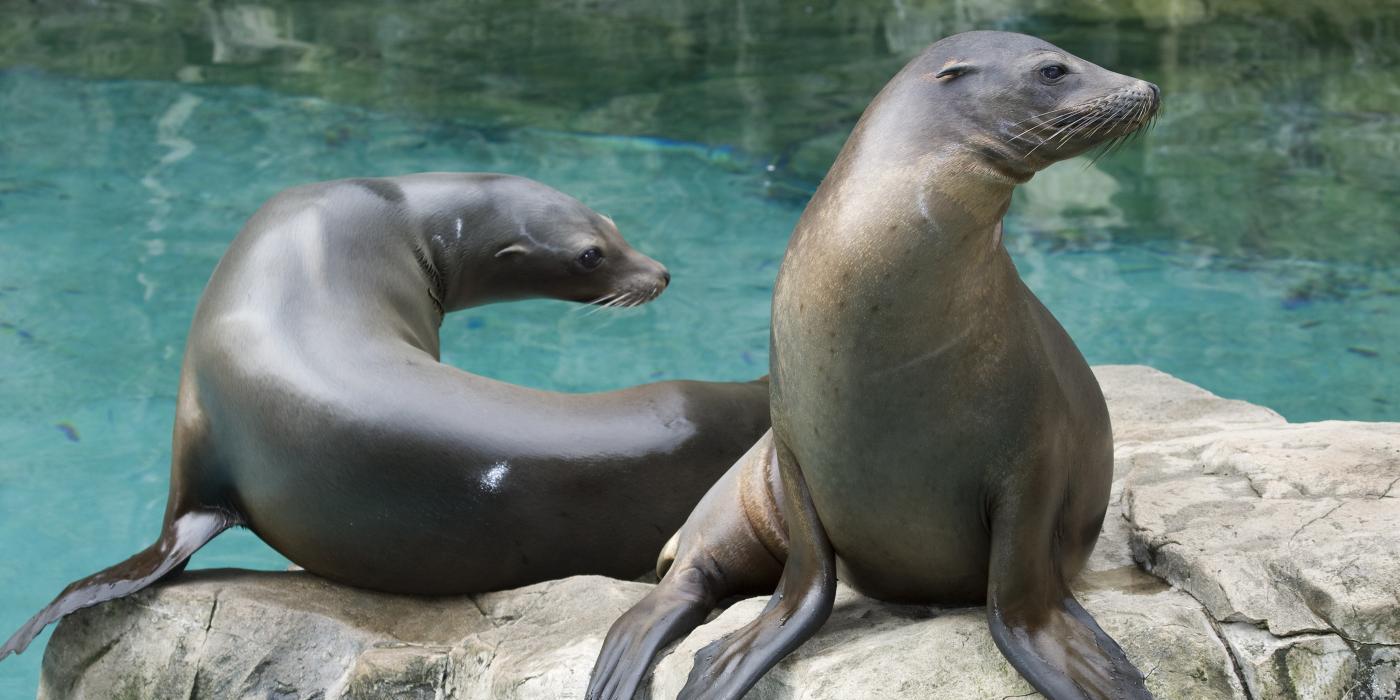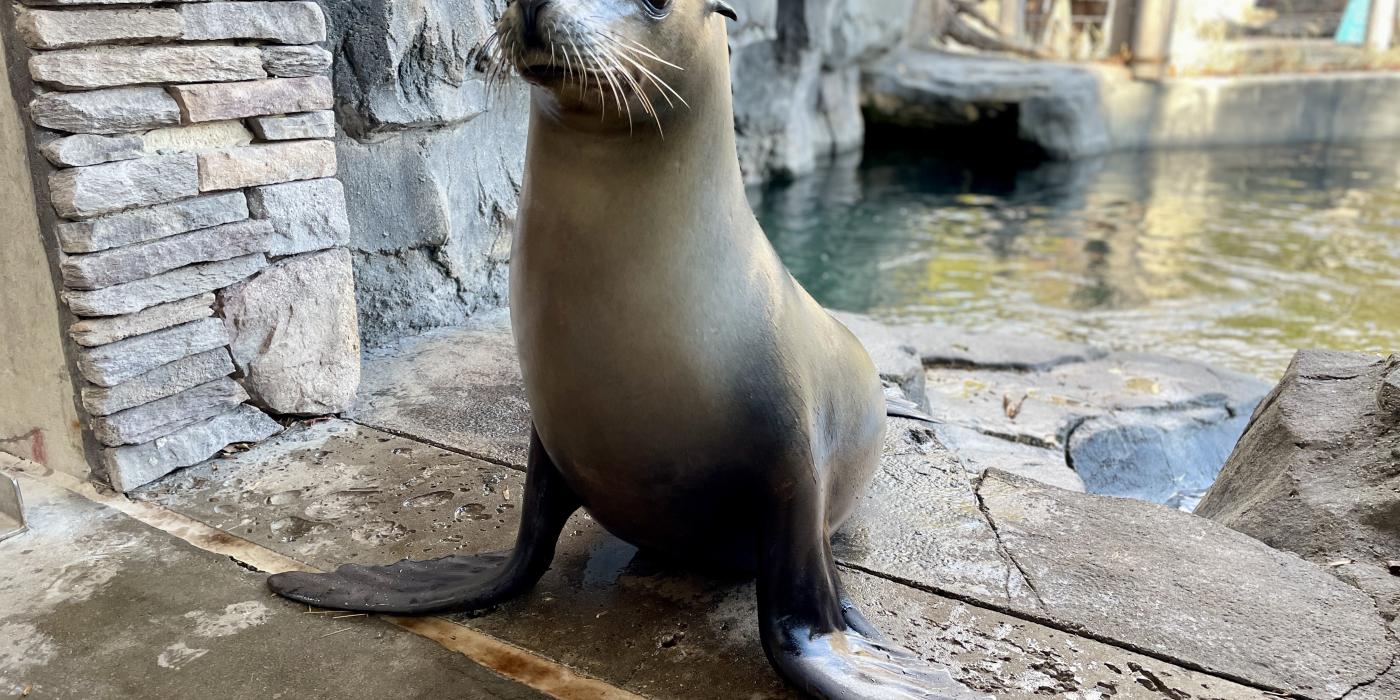New at the Zoo: North American River Otter Pups
The Smithsonian’s National Zoo is otterly delighted to introduce Coquille, Potomac and Nash — American Trail’s adorable North American river otter pups! Born to 3-year-old parents Ashkii and Emmett, their arrival Jan. 21 marked the first births of their species in the Zoo’s 130-year history. Get the latest news in this PUPdate with assistant curator Rebecca Sturniolo.
What are your favorite facts about North American river otters?
Like their cousins, the sea otters, North American river otters have very thick and dense fur which help keeps them warm in cold temperatures. They also have oil glands in their skin that coats their fur and keeps them waterproofed! Another fun fact is that their tails make up to 40 percent of their entire body length.
Last, but not least, North American river otters are considered a keystone species, which means other species in the same habitat largely depend on the existence of river otters. They are a top predator and their presence also reflects the health of the ecosystem around them. Find river otters, and you will find healthy streams and rivers.
What are mom and dad’s personalities like?
Ashkii is a very laidback otter. She is very comfortable around her keepers, and this has proven helpful now that she has pups. She is very cooperative when we need to access the pups for weigh-ins and health checks. She’ll calmly shift to a different stall and eat while watching us handle her pups.
Emmett, on the other hand, is a bit of a wild card and much more high strung. He’s almost the total opposite of Ashkii. He tends to be very high energy, has a hard time focusing when something else is grabbing his attention, and he is a loud and noisy otter.
What are the pups’ names?
The female is named Coquille (pronounced “co-KEEL”) after the Coquille River in southwestern Oregon. The first male is named Potomac after the Potomac River, which forms the border between Maryland and Washington, D.C. The second male is named Nash for the Nash River in New Hampshire.
Do the pups’ personalities mirror their parents’?
It is difficult to tell what parents the pups seem to be acting like the most. They have just started becoming more adventurous and are spending more time out of the den. Only time will tell what their personalities will be like as adults!
How much do the pups weigh?
Coquille weighs 1.8 kilograms (4 pounds), Potomac weighs 2.3 kilograms (5 pounds) and Nash weighs 2.6 kilograms (6 pounds). All three weighed about 130 grams the day they were born, so they have all grown immensely over the past 2 1/2 months!
What do you enjoy most about working with river otters?
Our river otters are very active and playful, and watching them display their natural behaviors is one of the best aspects of working with them. They are also incredibly intelligent.
They are highly food-motivated, which makes them fun to train. This can be challenging, though, because they tend to have short attention spans. We use positive reinforcement as part of our husbandry training program. The animals have the choice of whether they want to participate (or not). If they choose to participate and do the correct behavior asked of them, we reward them with a favorite treat.
Ashkii and Emmett know how to do many behaviors on cue — get onto a scale, into a crate, open their mouths for mouth checks, spin in either direction and present body parts for examinations. They are currently learning how to sit still for voluntary injections and blood draws.
They are also very fun to enrich. They interact with almost every piece of enrichment that we give them, so finding new toys, puzzle feeders and husbandry behaviors to train is very rewarding.
What is most challenging about working with them?
Although otters look cute and cuddly, they have a nasty bite. Their quick movements and unpredictable behavior also makes them a dangerous animal to work around. In fact, they are the only animal that we do not share the same space with on American Trail. The adults are managed in protected contact, meaning there is always a physical barrier between the keepers and the otters.
Related Species:




